Environment
The 5 Most Polluted Waterways In The United States
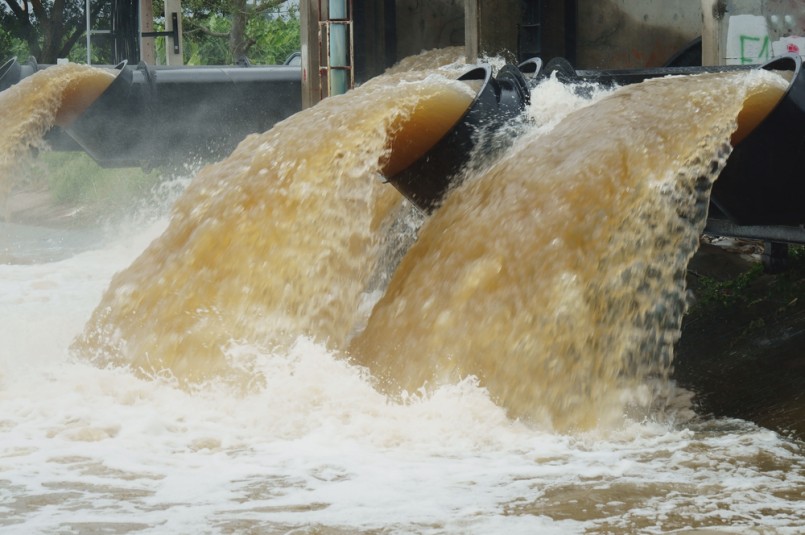
Image: Shutterstock/sakhorn
The 5 Most Polluted Waterways In The United States
When you think of polluted waterways, it’s easy to think of the garbage and scum covered rivers in underdeveloped countries, or even the unnatural colors that dye the Yellow River in Asia. What many people don’t think about is how the rivers they pass on interstates and even the ocean at their favorite beaches are just as badly polluted—it’s just not as visibly obvious. The most polluted waterways in the United States might shock you, but thankfully there are many ways you can help clean up and restore these rivers, channels and oceans.
Mississippi River
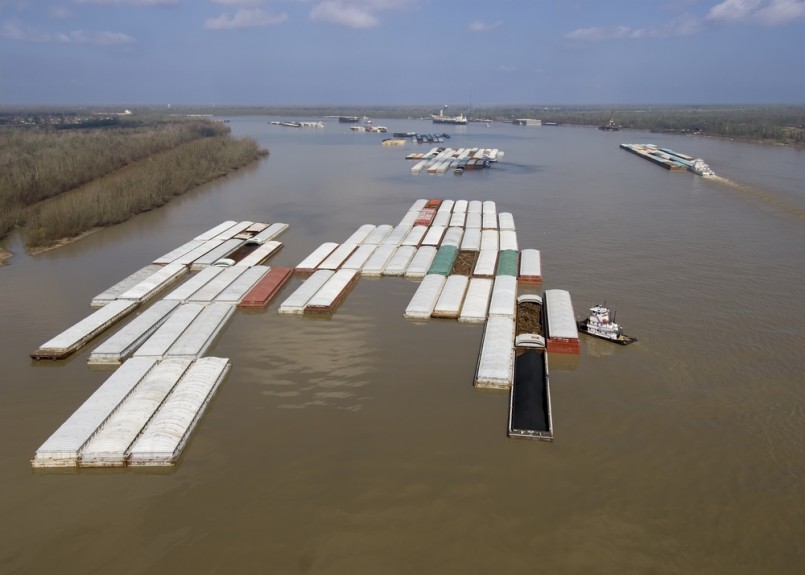
Image: Shutterstock/Ed Metz
The Mississippi River is the second of the most polluted waterways in the United States, the Ohio River being the most polluted. The Mississippi River is arguably the most well-known waterway in the U.S., so it is surprising how little attention it gets for its bad environmental state.
The river earned its nickname the Big Muddy due to its brown color as a result of sediment. But the river has also been called the Colon of America because of how contaminated it is. While sewage is a big player in the river’s pollution, the damage primarily comes from agricultural pollutants. At the mouth of the Mississippi in the Gulf of Mexico lies a dead zone of 6,000-8,000 square miles, which was caused by nitrogen-based fertilizer run-off. If agricultural run-off, namely nitrogen and phosphorus pollution, were included under protocols set by the Clean Water Act of 1972, this would prevent the Mississippi and other rivers from being so devastatingly polluted. Rather than change the Act, the EPA urged states to make the first move.
In 2014 a General Electric oil barge crashed into a towboat between New Orleans and Baton Rouge, spilling an estimated 31,500 gallons of light crude oil into the Mississippi. Each gallon of oil weighs about seven pounds, which means the oil spill contributed 217,000 pounds of oil into the river. This would’ve killed off any marine life in the area, but it’s hard to believe that any aquatic life would remain after previous disasters on the river. In 2012, a study from Environment American Research and Policy Center discovered that more than 12.7 million pounds of toxic chemicals, including arsenic, benzene, mercury, and nitrates, were dumped into the river in a single year. And in 2010, more than 125 million pounds of toxics were released into waterways tributary to the Mississippi. Each year we dump about 576 times more toxic pollution into the Mississippi River and hardly any action is being taken.
Join Friends of the Mississippi River to volunteer and stay updated on the condition of the river.
Pacific Ocean
The Pacific Ocean which covers much of the U.S. border is easily one of the most polluted waterways within United States territory. Garbage is a primary concern for the ocean, as it’s home to the “World’s Largest Landfill,” which is 3.5 million tons of trash that gets trapped together as a result of the ocean’s currents. The landfill-on-water is approximately the size of Europe.
About 100 million tons of plastic are produced each year, of which 10 million end up in the ocean. About 80% of this trash comes from land. Plastic is incredibly difficult to decompose. A single one liter bottle could break down into enough small fragments to put one on every mile of beach in the entire world.
While in many polluted waterways aquatic life dies out all together, in the Pacific Ocean marine life survives but many sea creatures are badly harmed from various forms of pollution. Fish ingest an estimated 12,000-24,000 tons of plastic each year in the Pacific. Many birds also mistake trash for prey and these seabirds have been found dead with their stomachs filled with bottle tops, lighters and balloons. A turtle found dead in Hawaii contained more than a thousand pieces of plastic in its stomach and intestines. More than one million marine mammals are killed annually by either eating or getting tangled in plastic.
Join the Ocean Conservancy to find out more and learn how you can help protect the Pacific Ocean.
Ohio River
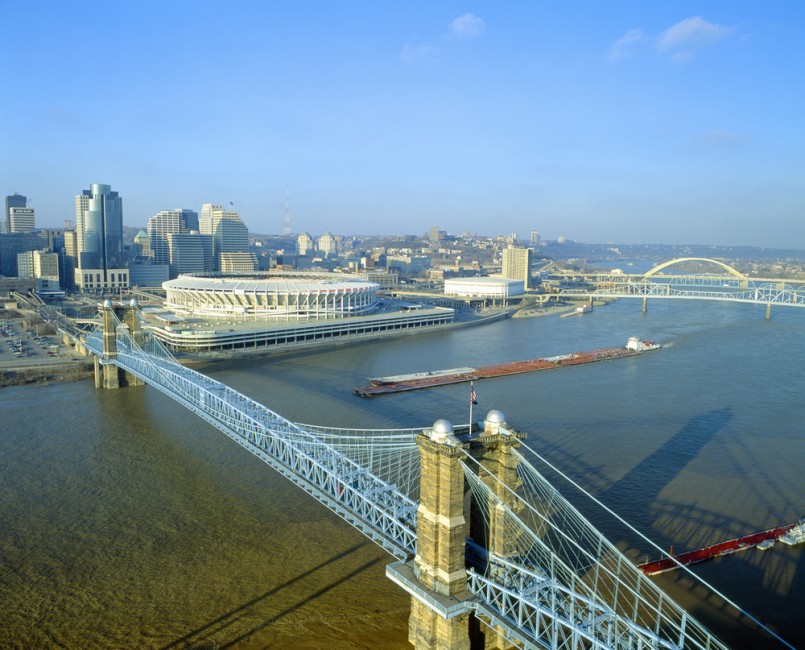
Image: Shutterstock/Joseph Sohm
The Ohio River is infamous for industrial pollution. Even after much clean-up and stricter regulation, the Ohio River still ranks first of the most polluted waterways in the U.S. In 2013, 24,180,821 pounds of pollution discharges from industry were recorded—this is more than double of what pours into the Mississippi River.
About 92% of these toxic discharges are nitrate compounds coming mostly from AK Steel’s Rockport, Ind. plant. The river technically meets the human health standards for nitrates so minimal changes are being made in regulation. The plant shifts the blame for nitrate pollution to farm run-off from nitrogen-based fertilizers, which are not required to be reported in the EPA’s Toxic Releases Inventory. Nitrates contribute to the toxic algae blooms and oxygen-depleted dead zones, like the one in the Gulf of Mexico which is approximately the size of Connecticut.
You can join the Ohio River Foundation to help restore this vital river.
Tennessee River
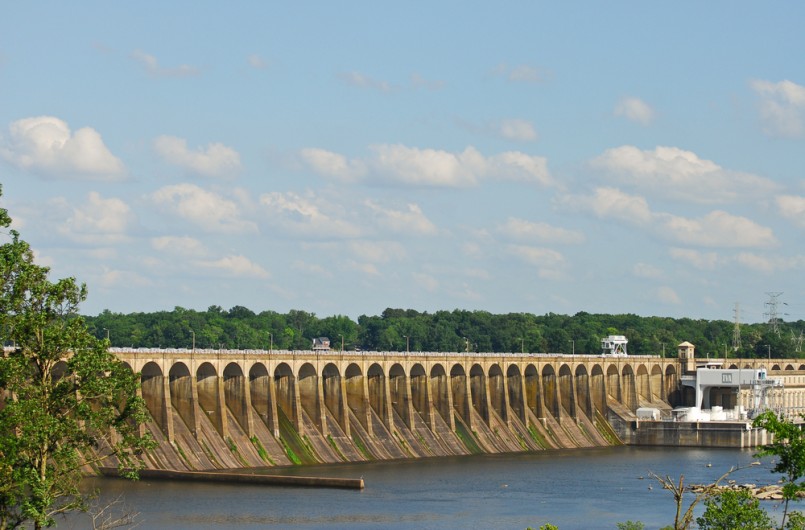
Image: Shutterstock/Wayne James
In 2015, the West Morgan-East Lawrence Water Authority and three North Alabama residents filed a class action lawsuit agains 3M Company, Dyneon, and Daikin America for polluting the Tennessee River with perfluorooctanoic acid (PFOA) and perfluorooctane sulfonate (PFOS). These are man-made chemicals used for making items fire resistant and oil, stain, grease, and water repellant. In the late 1990’s, 3M discontinued manufacturing these chemicals due to their risk. The lawsuit states that the chemicals can cause health issues such as cancer, immune system issues, thyroid disease, ulcerative colitis, and high cholesterol.
3M knew the levels for safe drinking water were inadequate to protect the Plaintiffs and that under the new suggested standards, the PFOS and PFOA levels in the water were dangerously high. The Agency for Toxic Substances and Disease Registry analyzed the blood serum of 121 people in nearby locations and found that elevated levels of PFOA were found in the blood. The Tennessee River supplies at least four million people with drinking water.
Electric power production from hydropower and coal-fired power plants has dramatically changed the river. A series of dams has significantly altered the river’s shape and has impeded on migrating species. Coal-fired plants along the river dispose of enormous amounts of coal ash, which threatens the water quality.
The Tennessee Valley Authority (TVA) has greatly altered the river for the purposes of navigation, flood damage reduction, power production, water quality and supply, and recreation. As a result, the river is home to the highest number of imperiled species of any river basin in North America. The Tennessee River is home to 57 at-risk fish species, 47 at-risk mussel species, and two endangered terrestrial species—the Gray/Indiana bat and Red-Cockaded woodpecker. It is also home to the largest nesting populations of bald eagles in the lower 48 states.
Four TVA coal power plants are located on the Tennessee River, and altogether they contain almost thirteen billion gallons of coal ash. In 2008 at the Kingston Plant, a coal ash impoundment dam broke causing a 1.1 billion gallon coal ash spill.
Join Tennessee Riverkeeper to find ways to restore this watershed.
Houston Ship Channel
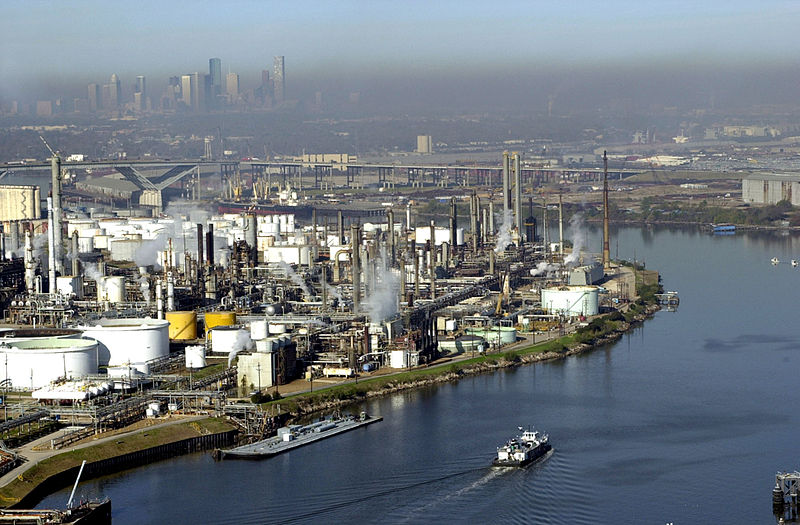
Image: Wiki Commons
The Houston Ship channel is one of the most polluted waterways in the United States and it flows directly through the environmentally sensitive Galveston Bay. Houston Bay is also home to a predominantly Hispanic and black East Houston community that is exposed to some of the worst pollution in the country. A survey conducted by the Healthy Port Communities Coalition discovered that residents of the surrounding neighborhoods suffer from higher rates of cancer and respiratory illnesses than average Texans. The large vessels that use the channel emit enormous amounts of diesel exhaust. Diesel exhaust has been linked to respiratory and heart disease, and is a known carcinogen.
The EPA launched a port initiative in 2014 that announced an $868,000 diesel-emission reduction grant for the Port Of Houston Authority. The goal was to replace short-haul trucks with older, dirtier engines with newer, cleaner trucks.

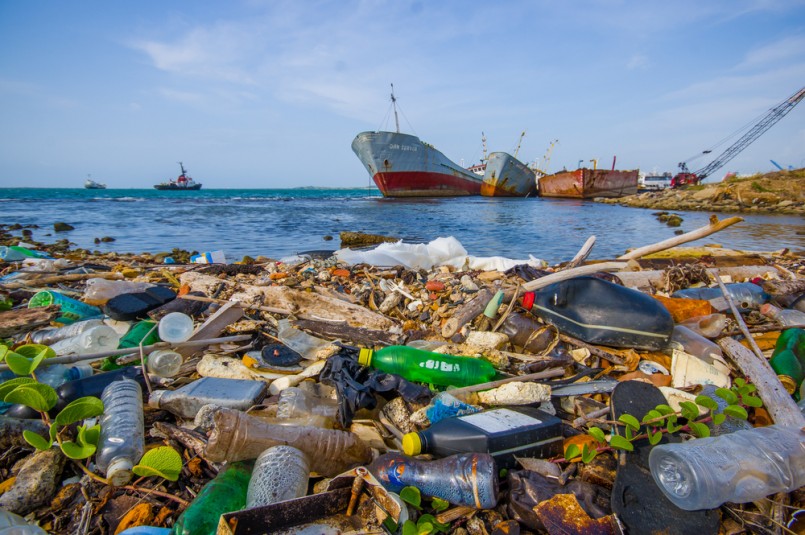




4 Comments